Koduõlu, portrait of a style
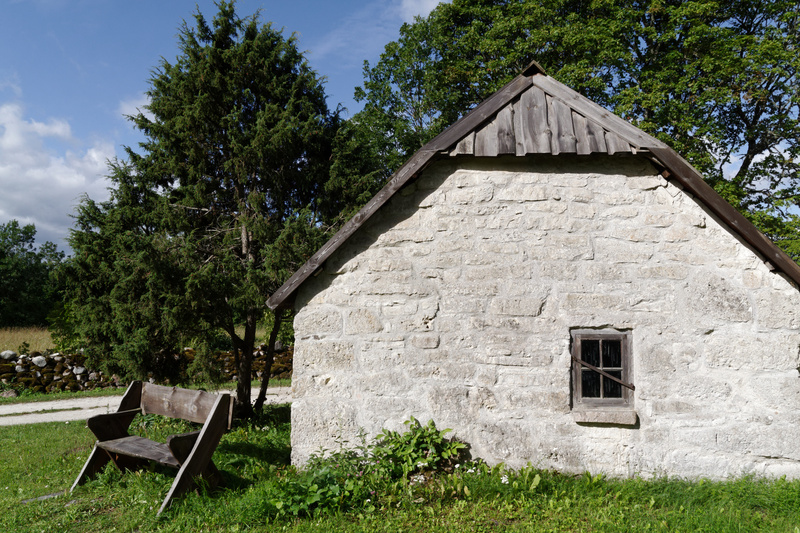
Old house in Muhu Museum in Koguva, with a big juniper next to it |
We visited quite a few brewers on Saaremaa, Hiiumaa, and Muhu, and tasted a good number of different koduõlu, so it's time to summarize all that to make a proper description of a style that has barely any documentation in English at all. For those who have not followed the blog: we are talking about koduõlu, the traditional farmhouse ale from the large Estonian islands in the Baltic.
Be aware that on the mainland people brewed a completely different kind of beer, which they also called koduõlu. This type was oven-based, rather like Lithuanian keptinis. It seems to mostly have died out, but we learned a bit more about it in Setomaa. The Swedes on Vormsi seem to have brewed in the same style. Older descriptions from Ruhnu and central Estonia mention stone beer.
The beer was brewed for the midsummer celebration (Jaani), Christmas, and hay-making, but also for gatherings like weddings, funerals, and so on. Beer was also brewed if the neighbours gathered to help one of the farmers for some special task.
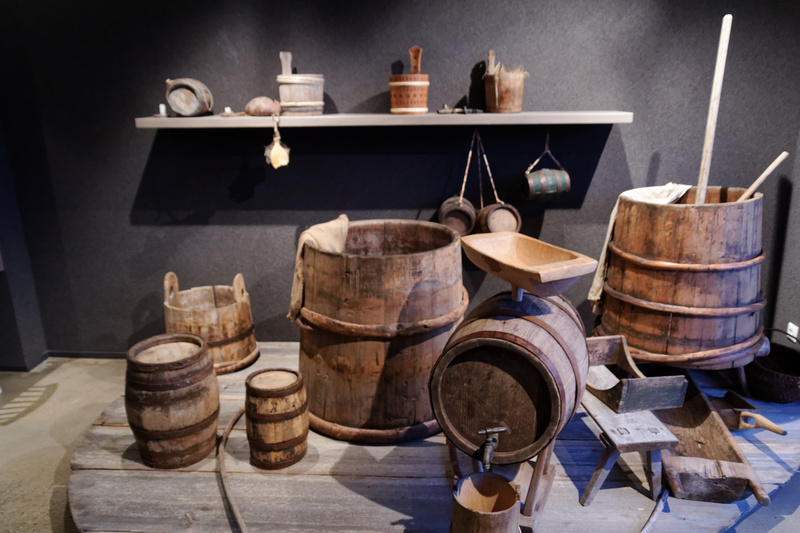
Old brewing gear exhibition, Hiiu Õlle Koda, Kassari, Hiimuaa |
The reason the islands have maintained the farmhouse brewing tradition, which apparently has mostly disappeared on the mainland, is probably that the islands used to be quite isolated. In addition, Saaremaa has rich farmland, so there was enough grain to brew from. After the Soviet occupation in 1945 agriculture was collectivized, which disrupted many of the patterns of traditional life, but the beer brewing somehow survived. In fact, the collective farms would often buy beer from local brewmaster for official celebrations. There would even be brewing competitions between different collective farms.
Originally, the farmers made their own malts from their own grain, and everyone seems to have used barley, and only barley. The grain was soaked in a sack or a wooden tun, then spread out in a wooden frame to sprout. After that it was usually dried either on a heated floor or simply in the sun. They would get very pale, unsmoked malts. A very few people might dry the malts in the baking oven, which would basically give caramel malts.
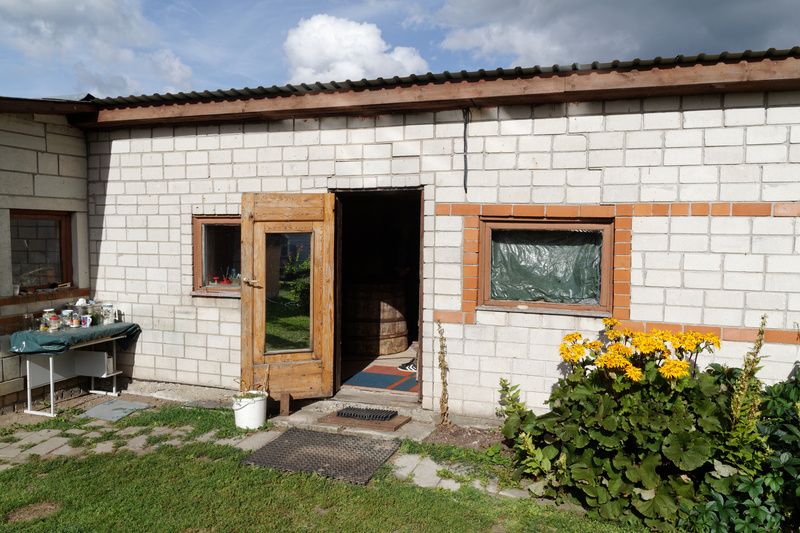
Jüri Sklennik's brewery, Aste, Saaremaa |
The brewing process seems to be essentially the same for everyone. Most do a simple infusion mash, but some do a two-step mash where hot liquid is added half-way through the mash. The mash is then lautered through juniper branches, and sometimes straw. The hops are boiled in water to make hop tea, but people added it at different times. Some poured it into the mash, while others added it to taste after fermentation. Nobody boils the wort.
Everyone seems to have used juniper in the strainer, and many also made juniper infusion for the mashing. Aarne Trei was the only one who didn't use juniper, but even he said that his uncle used to use it. So clearly juniper has been used by very nearly every single brewer.
Hops have been very sparingly used. I only have hard numbers from three brewers, and they used 0.54, 0.83, and 2.7 grams of hops per liter of finished beer. And the beer definitely has barely any hop character at all. The IBU will probably be around 5-10, generally.
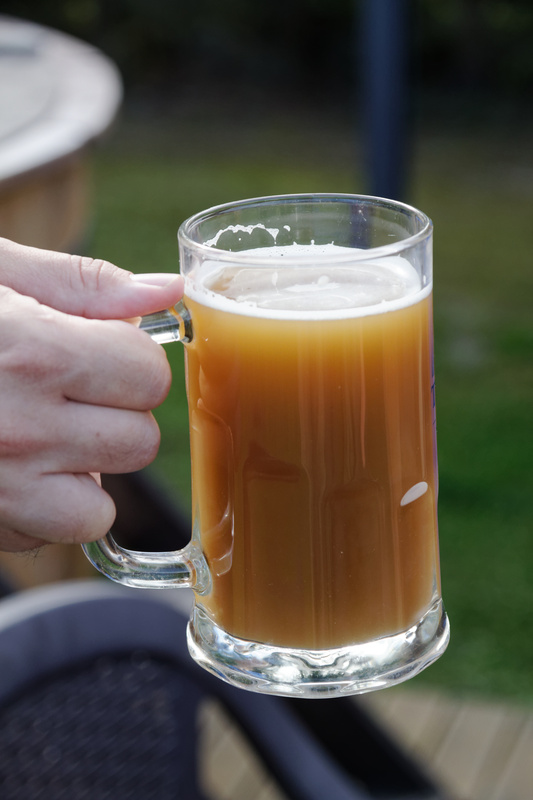
Andres Kurgpõld's beer |
People on Saaremaa often claim their beer is 10% strong, and will tell you how people from the mainland have difficulty handling this amount of alcohol. As for malts, people seem to have used 0.286 to 0.4 kg per liter, and their OGs seem to be 1.060 to 1.066. The strength of the beer seems to be 5% to 7.4%, with most of the beers being in the high end of that range. So apparently the mainlanders can stand even less alcohol than the islanders think. Final gravities seem to be 1.008 to 1.019, and the beer is generally sweetish.
The traditional farmhouse yeast seems to have died out. Aarne Trei lost his in the 70s or 80s, and Meelis Sepp in the 90s. Kati Aus helped me trace the guy in Lümanda who was supposed to still have his own yeast, but she came back with the answer that "nobody in this part of the island is using old yeast." So the yeast is almost certainly gone. When they had their own yeast, people seem to have pitched it at "body temperature" or "the temperature of human skin."
Today, people use either baking yeast, either Nordic Pärm (Vilmix) or Pärm Euroferm (Salutaguse). Interestingly, the second is the Suomen Hiiva yeast that's used in sahti, just sold under a different name in Estonia. That explains the very sahti-like banana aroma from most of the koduõlu we tasted, although in koduõlu the aroma generally seems to be more restrained than in sahti. Some people also use Safbrew T-58, and one uses Safale S-04.
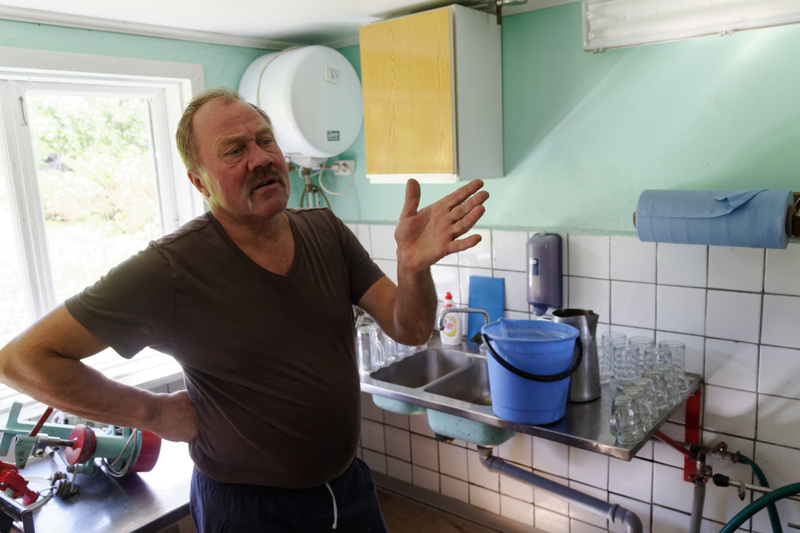
Professional brewer Kaido Lõppe in his brewery |
Fermentation times are generally short, 2 to 4 days, but the beer continues fermenting in the cask. Some brewers close up the cask to let the beer build up some carbonation, but the carbonation was generally low in the beers we tasted.
Most of the beers are sweetish, and balanced more by the juniper than by the hops. All are hazy, and most of them very pale yellow, but some are brownish. The aroma tends to be fruity from the yeast, very often with quite strong banana character. Not everyone likes this. We never tasted her beer, but Lili Käär was against what she called "banana juice beer." A good bit of juniper aroma can be made out in many of these beers. Usually, they are soft, smooth, and round, and very highly drinkable. It's probably this last part that causes problems for the mainlanders, because it's rare to find 7% beer that's this drinkable.
Overall, it looks like koduõlu as a style is quite healthy. Most of the well-known brewers are older, but there are younger brewers as well, and several are considering to start brewing it commercially. There are also a few places in Saaremaa, like Tihemetsa, that serve real home-brewed koduõlu, and some more tourist-oriented places on Hiiumaa that claim to do the same. Very likely, this is a beer style that will be with us for quite a few decades more, even if it's still rather elusive and hard to find. It's very much worth the effort, though.
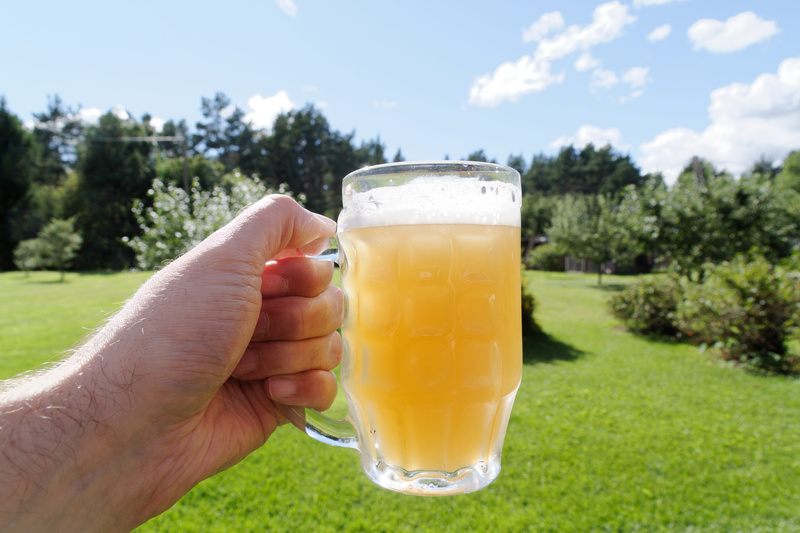
Kaido Lõppe's beer |
Dictionary
| Estonian | English | Comment |
|---|---|---|
| Koduõlu | Home beer | The local farmhouse ale |
| Taherberi | Small beer | Literally "musician beer" |
| Taar | - | Spent grains left to sour over night, then run off |
| Õllekann | Beer mug | |
| Kaima tõrs | Mashtun | |
| Kalja tõrs | Lauter tun | |
| Soov | Filter in lauter tun | |
| Linnased | Malts | |
| Maged | Milled barley malts | |
| Pärm | Yeast | |
| Kadakas | Juniper | |
| Humal | Hops | From Swedish or Danish "humle" |
| Pors | Sweet gale | From Swedish or Danish "pors" |
| Sookail | Wild rosemary | |
| Humalvesi | Hop tea | Literally "hop water" |
| Virre | Wort | From Swedish "vört"? |
| Erk | Mash paddle | Says Paavo Pruul |
| Tubra | Mash paddle | Says Andres Kurgpõld |
| Naga/narre | Rod for lauter tun | Says Paavo Pruul |
| Pulk | Rod for lauter tun | Says Lili Käär |
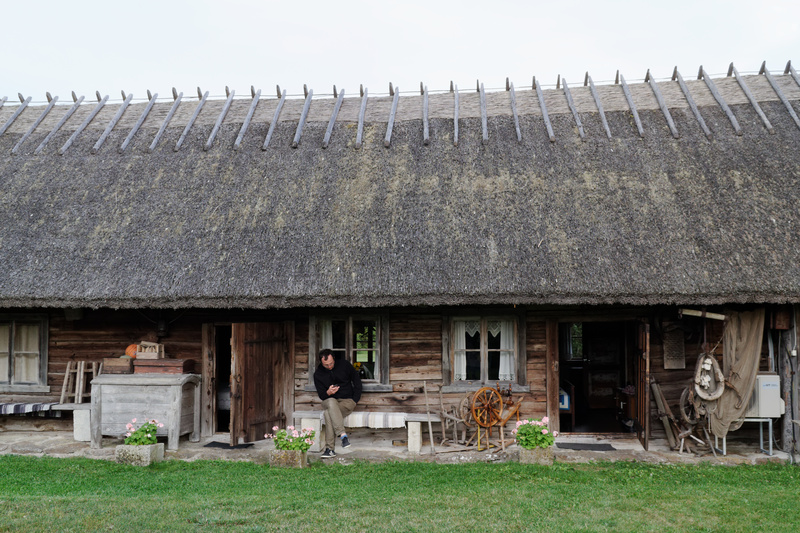
Aadu Talu, a bed & breakfast at Ruhve, Saaremaa |
Sources
Interviews:
- Meelis Mereäär, Koguva, Muhu
- Meelis Sepp, Kõrkküla, Saaremaa
- Jüri Sklennik, Aste, Saaremaa
- Andres Kurgpõld, Tõnija, Saaremaa
- Aarne Trei, Pihtla, Saaremaa
- Paavo Pruul, Sõru, Hiiumaa
- Helgi Põllo, Hiiumaa Museum, Kärdla, Hiiumaa
- Kaido Lõppe, Partsi, Hiiumaa
- Lili Käär, Kärdla, Hiiumaa
Many of these interviews were conducted in Russian with Martynas Savickis as the translator. Many thanks to Martynas, who had a pretty tough job.
Published sources:
- The Magical Meals of Muhu, Ingrem Raidõje and Jüri Seljamaa, Rannarahva Koda, Tallinn, 2015.
- Estonian Koduolu, Ari Järmälä, 1997.
- Unustatust ja uuemast Saaremaa koduõllenduses, Tormis Jakovlev, Saaremaa Muuseumi kaheaastaraamat 1995-1996, p116-138.Kuressaare 1997. Kindly translated by Virgo Vjugin.
- Koduõlle valmistamine ja joomine Hiiumaal, Helgi Põllo, web page, Rahvakultuur.ee, 2010. Kindly translated by Virgo Vjugin.

Road at Muhu Museum village |
Similar posts
Aarne Trei, a koduõlu veteran
From the previous stop we drove just a few kilometers, to meet brewmaster Aarne Trei
Read | 2018-02-18 11:45
Meelis Sepp, maltster and brewer
From Setomaa we drove right across all of Estonia to the west coast, then took the ferry over to the island of Muhu
Read | 2018-01-28 13:57
Pihtla, a farmhouse brewery on Saaremaa
Koduõlu is one of the few farmhouse styles that you can actually buy right now, thanks to the commercial brewery Pihtla Õlleköök, in the village of Pihtla on Saaremaa island in Estonia
Read | 2018-02-13 16:02
Comments
Collin - 2018-04-09 23:43:42
I think you may have meant kilograms here "As for malts, people seem to have used 0.286 to 0.4 grams per liter" Or they have some super sweet malt!
Lars Marius Garshol - 2018-04-10 06:49:32
@Collin: You are of course completely right. Thank you for catching. Fixed now.